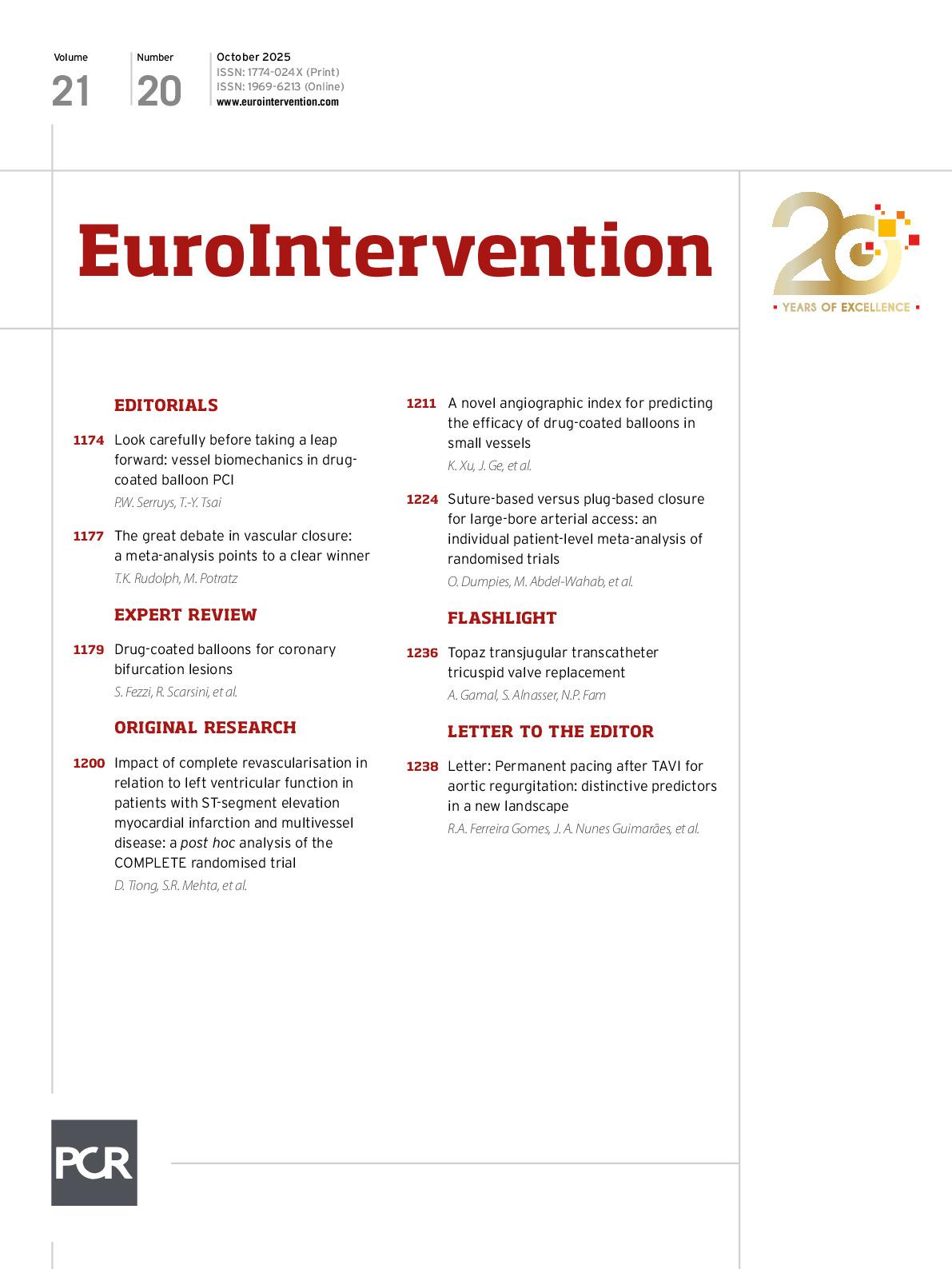Abstract
Background: The drug delivery eï¬ciency of drug-coated balloons (DCBs) in de novo coronary artery disease is correlated with atherosclerotic plaque characteristics. It remains to be elucidated whether plaque composition and vulnerability can affect the efficacy of DCBs.
Aims: This study aimed to explore the association between a novel angiography-based radial wall strain (RWS) measurement for plaque vulnerability and DCB efficacy in de novo small vessel disease (SVD).
Methods: This study is a post hoc analysis of 266 SVD lesions in 260 patients treated with a paclitaxelâcoated balloon or plain old balloon angioplasty (POBA) from the PEPCAD China SVD study. The baseline maximum RWS (RWSmax) ≥13% was selected as the cutoff value for vulnerable plaques. The primary outcome was in-segment late lumen loss (LLL) at 9-month follow-up.
Results: A total of 152 and 72 lesions in the DCB and POBA groups, respectively, completed the 9-month angiographic follow-up. In the DCB group, lesions with RWSmax ≥13% had higher in-segment LLL (0.24±0.53 mm vs 0.05±0.16 mm; p=0.0009), greater binary restenosis (14.9% vs 1.9%; p=0.0040) and more target lesion failure (10.2% vs 1.6%; p=0.022) than those with RWSmax <13%. Among all the lesions with RWSmax ≥13%, no significant difference was observed in in-segment LLL (0.24±0.53 mm vs 0.32±0.48 mm; p=0.49) between the DCB and POBA groups.
Conclusions: Angiographically derived RWS has the potential to predict the angiographic and clinical outcomes of DCB treatment for de novo SVD (PEPCAD China SVD study; ClinicalTrials.gov: NCT03625830).
Sign up for free!
Join us for free and access thousands of articles from EuroIntervention, as well as presentations, videos, cases from PCRonline.com

